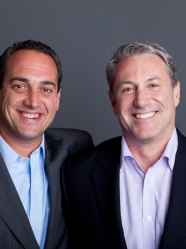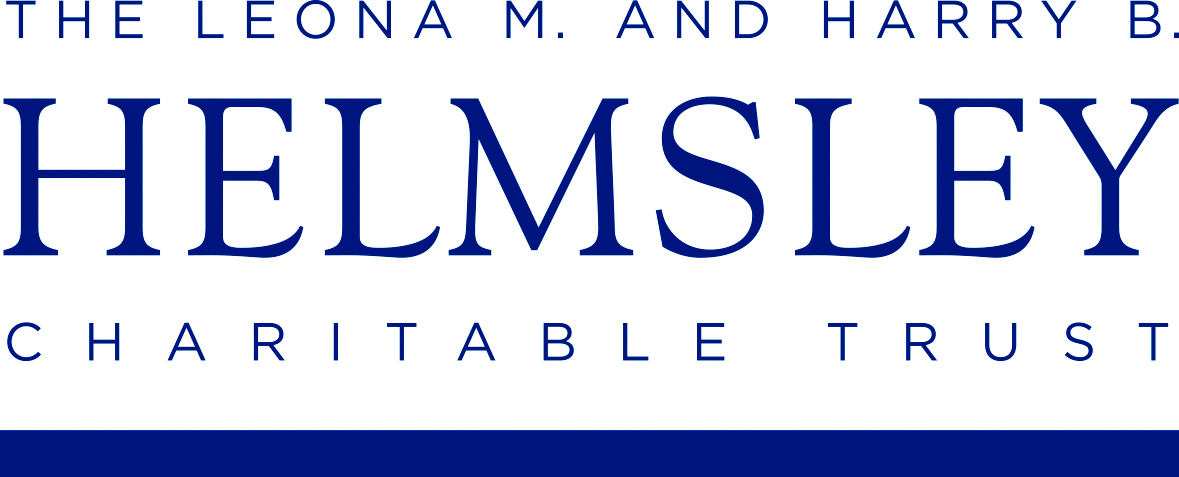Interview with David Panzirer and Dana Ball, Part 1: The Beginning of the Helmsley Charitable Trust’s Type 1 Diabetes Program
By Adam BrownKelly Close

by Adam Brown, Hannah Deming, Nancy Liu, and Kelly Close
twitter summary: Our interview with the 2 forces behind the $50 million/year #t1 diabetes program of the HCT & their journey in diabetes
short summary: We had a wide-ranging interview with two of the pioneers of the Helmsley Charitable Trust’s (HCT) Type 1 Diabetes (T1D) program (which gives $50 million a year to type 1 research, treatment and services): HCT trustee David Panzirer and patient advocate Dana Ball. In part one of our interview, David shares how his daughter Morgan’s type 1 diagnosis in 2007, followed by the death of his grandmother Leona Helmsley just five months later, led to the formation of HCT’s very influential T1D Program. The T1D Program has funded nearly $200 million since its first grants, and remains one of the largest funders in type 1 diabetes today. That comes with a lot of responsibility and a lot of challenges, which Dana and David discuss in more detail below. Stay tuned for more in our five-part series:
Part 1. How The Helmsley Charitable Trust became one of the most important players in diabetes, and the funding needs and challenges in type 1
Part 2. The Future of the Type 1 Diabetes Field – what challenges and promises lie ahead?
Part 3. Controversies in Diabetes: Technology, Debates, and the “Cure”
Part 4. The T1D Exchange: A story of David and Dana’s drive to accelerate innovative type 1 diabetes research.
Part 5. What can diabetes advocates learn from successes of the HIV/AIDs movement?

BACKGROUND ON THE HELMSLEY CHARITABLE TRUST (HCT)
KELLY CLOSE: Thank you so much for sitting down with us today. I remember really vividly when I met both of you in 2008. We didn’t stop talking about type 1 for two hours straight! It’s amazing to think about how you have influenced the landscape of type 1 diabetes, and the HCT in particular has helped make so many strides. To start off, can you share some background on the formation of the Helmsley Charitable Trust?
DAVID: Absolutely. My grandmother, Leona Helmsley, amassed a huge fortune through real estate. Upon her death in 2007, her will dictated that all of her assets be liquidated and transferred into a charitable trust. Today, it is worth between $5 and $6 billion dollars. We’re the 12th biggest foundation in the US. I didn't grow up with money, so it’s surreal what her legacy has enabled.
KELLY: And when the Trust was being put together, that was also right around the time your daughter, Morgan, was diagnosed with type 1 diabetes?
DAVID: My daughter was diagnosed five months before Leona passed – March 23, 2007 at 4:33 pm. [Chuckles ruefully] Not that I remember the exact time … At that point, Leona had given $5 million to two different diabetes causes, to the JDRF as well as to another organization. This was based on Morgan’s diagnosis, of course.
When I first started out my singular drive was to find a cure for my daughter. But I soon came to understand that my responsibility is a lot bigger than just for my child. I’m not a religious person, but the fact that I was appointed as a Trustee just five months after my daughter was diagnosed with type 1 diabetes was a real message to me as to what I should be doing with my life. At that point, I was still working in real estate, but I immediately started learning more about diabetes – that is what led us to our conversation with you, very early.
KELLY: Dana, as someone who was so instrumental in those early days helping David develop the T1D Program, what did you learn about him?
DANA: David’s an amazing human being who just wants to help people with diabetes. He doesn’t care who has the answer. He doesn’t care how. He just wants to get it done. He has no ego. He’s compassionate, he’s caring, he’s dedicated, and he works around the clock. He never stops, even from the first time I met him and he was like a sponge. He was just tenacious. He wanted to know everything.
HANNAH DEMING: How large is the Trust’s T1D program?
DAVID: Overall, we give away 5% a year of the ~$5.0 billion HCT endowment ($250 million). The T1D program currently funds around $50 million a year. Since our first grants, we’ve funded about $200 million to date. HCT’s T1D Program represents approximately 10% of the available T1D budget when you include both government and major private funding. We think it’s about $500-600 million per year from the sources in the US. That’s a big number and a big responsibility.
FUNDING DIFFERENT AREAS OF TYPE 1 DIABETES
KELLY: There’s so much to ask! Let’s start with what everyone wants to know. How do you choose who and what to fund through the Helmsley Charitable Trust’s T1D program? What's most important?
DAVID: We start with our four main program areas: Research, Technology, Systems, and Outreach. Each area receives a budget and a strategy. We also create goals for each area, so we choose what to fund based on what we believe will give us the best chance of achieving our goals. We do view technology as the way to impact people with T1D in the near term (5-7 years).
What is most important is a well-defined plan to address the problem. Ultimately, could this move a better solution for patients with diabetes forward? We only have one criterion on what/who we fund, and that is what is best for people with type 1 diabetes.
HANNAH: How did you come up with Research, Technology, Systems, and Outreach?
DAVID: It really was an evolution of our learning. I started out thinking we were going to cure type 1. After months of diligence, I realized a cure wasn’t around the corner and we needed to ease the burden of managing this disease. At the Trust, we feel that the best way to do this is through technology.
In terms of how we measure impact, it depends on which of the four areas we’re talking about:
-
With Technology, we measure impact by how quickly we are helping the companies to accelerate their timelines in getting better products to people living with type 1 diabetes.
-
Systems refer to tools and resources that help all stakeholders working in type 1 diabetes, like the T1D Exchange. The fact that the T1D Exchange is the database now cited for all type 1 diabetes in the US is very impressive. We believe the type 1 diabetes community as a whole is better off with the T1D Exchange than without it. [Editor’s note: To say the least! You can learn more about the T1D Exchange in Part 4 of our series.]

-
Outreach is our near-term win and allows us to make an immediate impact. We send underprivileged, underserved children to diabetes camps. We also help a couple international organizations get supplies into people’s hands in parts of the world where type 1 is a death sentence.
-
In Research, we measure impact by moving things forward while having a focus on the goal – getting a drug or therapy/intervention to people living with type 1 diabetes. We’re also focused on getting the research community to work together and share data across institutions and disciplines.
THE CHALLENGES IN FUNDING TYPE 1 DIABETES
HANNAH: What do you think are the unique challenges in diabetes vs. other disease categories that HCT funds?
DAVID: One of the major challenges of type 1 diabetes is there are not enough people with type 1 diabetes to attract the big dollars from the large pharmaceutical companies. We are not quite an orphan disease, but we don’t have tons of people like in type 2 diabetes. If you are the CEO of a major pharma company, you will put money to work in type 2 vs. type 1 every time because of the many more users of your potential products. The issue is even worse in the type 1 technology space – pumps and continuous glucose monitoring – because only about 30% of people with type 1 diabetes use pumps and less than 10% use CGM.
In a perfect world, the company will be considering doing something in the type 1 diabetes space, but our funding can sometimes provide the push to move things along.
DANA: First, type 1 diabetes is complicated, meaning that discovery and development is hard and takes a lot of money. It’s also a small disease, meaning we need strong evidence and an army of engaged clinicians and patients. People often forget the need to start with the end in mind – we want to develop a drug or device to treat type 1 diabetes on the path to a cure.
KELLY: How do you think about the growth in type 2 diabetes competing with funding for type 1?
DAVID: It is a major challenge. However, as type 2 grows and a small fraction of that population start to use pumps and CGMs, that will ultimately help people with type 1 diabetes by increasing the number of people using these devices.
DANA: I think the future will prove there are many forms of diabetes ranging from the most severe form of autoimmune diabetes to insulin resistance in the aging population – eventually, most people will get diabetes if you live long enough. There is potential value to use type 2 drugs to improve control, insulin use, weight, resistance, and mood in type 1s. I think it’s a diabetes universe with many subtypes, and we need to do a better job of telling this story to patients, clinicians, and the public at large.
KELLY: Type 1 is a complicated landscape. Can you talk about when funding projects, how you balance cure vs. complications vs. better type 1 treatment?
DAVID: I am not a big believer in “cure,” and if there is going to be a cure, it is certainly not on the horizon. With that in mind, care is key. In my opinion, the way to impact care is to make this disease easier to manage, and I am convinced technology is the key to doing this. We believe CGM is the gating factor towards being able to begin to automate insulin delivery. We have also put some money to work in technologies that we think will be needed down the road, such as a stabilized glucagon.
DANA: I think it’s important to balance the goal of cure with the need and responsibility to improve quality of life for patients with diabetes and reduce the burden of managing type 1 diabetes. Short term, there is a lot of potential in automating insulin delivery and testing drugs that may improve glycemic variability and the amount of insulin needed to manage type 1 diabetes. As we move our short-term goals forward, we are also developing systems, like the T1D Exchange, that can gather enormous amounts of data on human disease so we can be more strategic about prevention and complications.
KELLY: Thank you. We really appreciate your time discussing The Helmsley Charitable Trust and funding type 1 diabetes research.
See our next issue to learn more about David and Dana's perspective on the future of type 1 diabetes, and the greatest challenges and opportunities that lie ahead...
[Editor's note: Disclosure: diaTribe is supported in part by a generous grant from the Helmsley Charitable Trust.]
Interested in learning more about The Helmsley Charitable Trust and the T1D Exchange? Please read about our recent updates on HCT’s $30 million program to fund automated insulin delivery and T1D Exchange’s new partnership with Lilly for type 1 diabetes.
Never miss an update by signing up here to receive free updates on future diaTribe articles.







